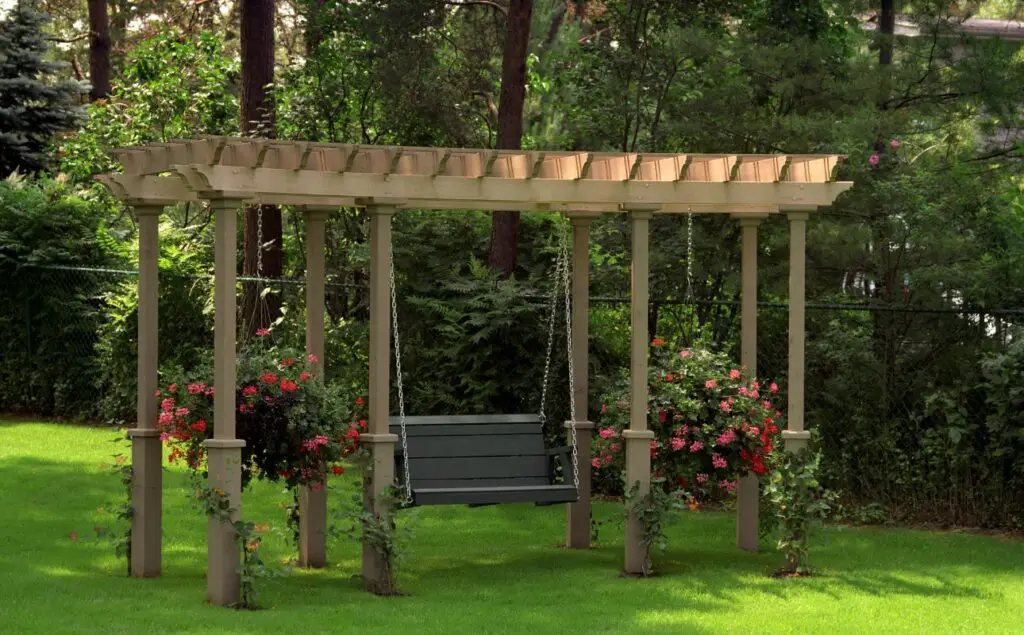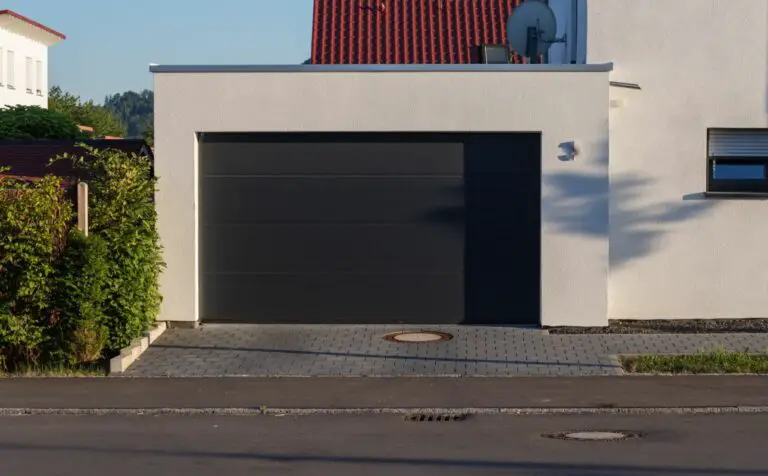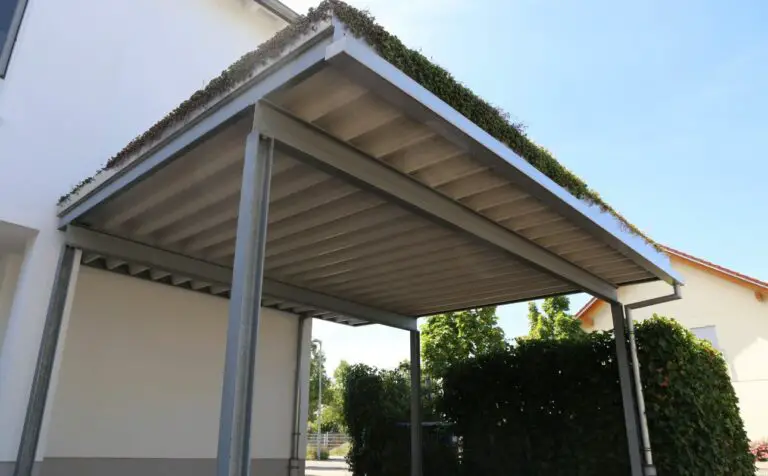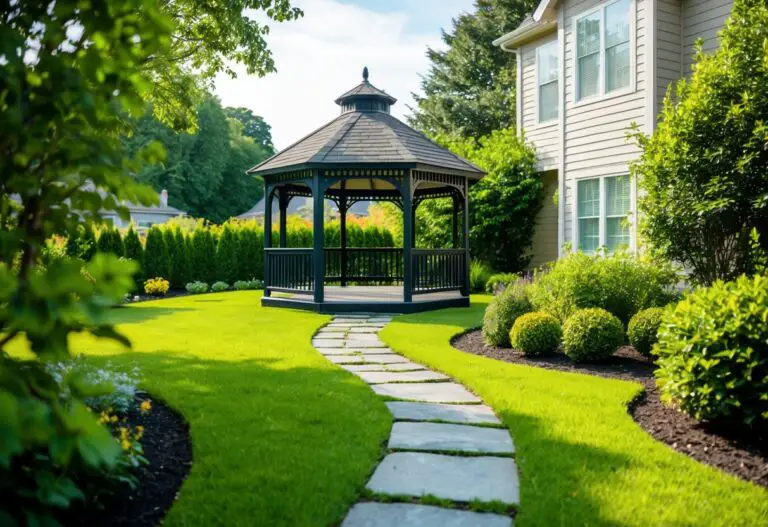A pergola is a popular outdoor structure that can provide shade, privacy, and a beautiful focal point for any backyard or garden. While many people choose to install pergolas on their patios or decks, some may wonder if it’s possible to install a pergola on grass.
The answer is yes, a pergola can be installed on grass, but it’s important to consider a few factors before doing so. One important consideration is the type of foundation or anchoring system that will be used to support the pergola.
The size and weight of the pergola, as well as the type of grass it will be installed on, should also be taken into account. With proper planning and installation, a pergola can be a beautiful and functional addition to any outdoor space, whether it’s on a patio, deck, or even on grass.

Benefits Of Installing A Pergola
Installing a pergola can bring numerous benefits to your outdoor living space. Here are some of the advantages you can enjoy:
- Additional Outdoor Living Area: A pergola can create an extended living space where you can relax, entertain guests, or even work.
- Protection From The Elements: With a pergola, you can enjoy fresh air and sunshine while being shielded from rain, wind, and harmful UV rays.
- Shade And Privacy: A pergola can provide shade and privacy, making it a perfect spot for a romantic dinner, a family gathering, or a quiet retreat.
- Aesthetic Appeal: A well-designed pergola can enhance the beauty of your home and add value to your property.
- Versatility: Pergolas are versatile in terms of design and function, and can be customized to fit any space and style.
- Multipurpose: Pergolas can be used for a variety of purposes, including dining areas, garden features, or children’s play areas.
Tools And Materials Needed For Installation
One important factor when considering the installation of a pergola is the tools and materials needed. When installing a pergola on grass, you will need the following tools and materials:
- Measuring Tape: To accurately measure the size and dimensions of the area where you plan to install the pergola.
- Level: To ensure that the pergola is installed straight and level on the uneven surface of the grass.
- String And Stakes: To create a guide for the layout and placement of the pergola.
- Power Drill: To drill holes and attach the anchor bolts to the base plates.
- Cement Mix: To fill the holes with concrete to secure the anchor bolts in place.
- Lumber: To construct the frame and beams of the pergola.
- Metal Brackets And Screws: To attach the beams to the posts and secure the structure.
- Pergola Kit: To provide pre-cut and pre-drilled materials and hardware for easier installation.
Preparing The Ground For Installation
One of the most important aspects to pay attention to is preparing the ground for installation. Before installing your pergola, take some time to evaluate the type of grass in your yard.
Different grass types have different rooting patterns and growth habits that will affect how well they respond to having structures built over them. Once you’ve identified what sort of soil preparation work needs doing, start digging up the area where you plan on placing your pergola so that it’s level with other parts of your backyard.
Positioning The Pergola On The Grass
Installing a pergola on grass can be a great way to enhance your outdoor space. However, it’s important to consider the positioning of the structure before installation.
Here are some tips for placing a pergola directly on grass:
- Ensure that the ground is level and stable. Uneven or soft ground may cause the pergola to lean or sink over time, resulting in potential safety hazards. You can use stakes or pavers to create a solid base for the structure.
- Consider using anchors or footings to secure the pergola into place. This will prevent it from shifting during heavy winds or storms, providing additional stability and protection.
- Keep in mind that installing a pergola directly onto grass may require regular maintenance such as mowing around its base and trimming plant growth.
Securing The Pergola To The Ground
Securing your new pergola to the ground is essential for its stability and longevity. While it may be tempting to install the structure directly on grass, this can lead to potential issues with shifting or sinking over time.
One popular option for securing a pergola is using concrete footings. This involves digging holes in the ground where each post will go and filling them with concrete. Once set, brackets can be attached to the footing and then bolted onto the bottom of each post.
Another approach is using anchor screws, which are long metal stakes that screw into the ground beneath the grass’s surface. These screws come in different lengths depending on soil conditions. After installation, attach brackets to each screw head and use bolts to connect them to your posts securely.
Adding Decorative Elements To The Pergola
When it comes to choosing decorative accessories, there are countless options available. You could add string lights or lanterns to create a cozy ambiance during evening gatherings. Or consider installing climbing plants such as ivy or roses to add natural beauty and shade to your pergola.
Design inspiration can be found online or in home improvement stores, so take some time to explore different styles before making any decisions. Remember, the key is to choose accessories that complement your pergola’s design while also reflecting your personal style.
Whether you prefer modern minimalism or rustic charm, there are plenty of ways to make your pergola unique with decorative touches.
Common Issues During Installation
Installing a pergola on grass may seem like an easy task, but as with any installation project, there are potential challenges that you may encounter.
One of the most common issues when installing a pergola on grass is ensuring that it stays level and secure in its position. The instability of grass can make this process more difficult than other types of installations.
To ensure your pergola remains stable, consider digging holes for posts to anchor them into the ground beneath the grass. Another solution for grass installation could be using concrete anchors or heavy-duty stakes to hold down each post securely.
It’s important to take precautions against damage from pests such as ants or termites which can cause significant structural problems over time if left unchecked. A layer of gravel or sand beneath the base of your structure can help deter these creatures while also providing additional support for your pergola.
The Bottom Line
Installing a pergola on grass is possible and can be done with the right tools. It is important to ensure that the ground is level and stable enough to support the weight of the structure.
Depending on the size of your desired pergola, you may need to obtain permission or a permit from your local authority before installation. It’s also worth noting that while a pergola can be moved or relocated after installation, it will require some effort and may cause damage to your lawn.
With proper planning and preparation, a beautiful and functional pergola can enhance your outdoor living space on the grass.





